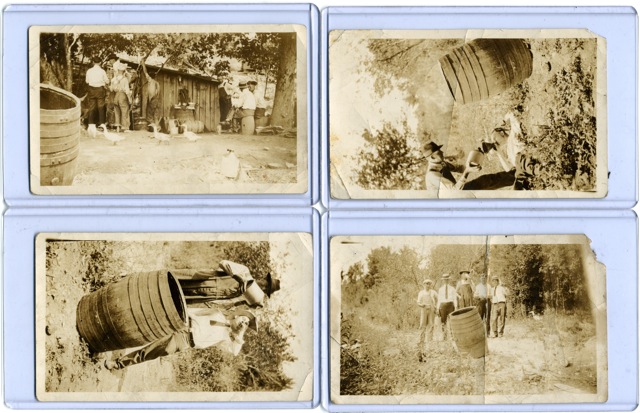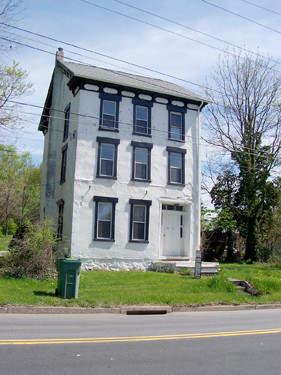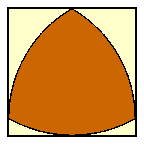Schwarz
View current page
...more recent posts
What does it mean to destroy a building? How do we read a damaged version of Le Corbusier's Villa Savoye at Poissy? For architecture historian Andrew Herscher, destruction is a type of language, a "form of design" that is "at least as significant as any of the elements from which buildings are constructed for living, for the living." [1] But let us take this further. If a building calls attention to itself when it has ceased to exist, is there a middle ground, an intermediate representational stage that not only forecasts a language of destruction, but that also evokes the purely conceptual urgings that inspired the design of the building in the first place?detroit
More recently at 7 World Trade Center there were constraints and requirements such as making the electronic wall blast proof, and this slowed me—constructively. I could think more about how the piece should look and about what content it should offer for this tragic but optimistically restored site.The newest complicated sculptural LED arrays require that I try to marry form, function, information, beauty, time, transcendence, realism, legibility, phantoms and more—and then make sure the stuff works. It’s routine for function or lack thereof to affect the look, for the look to demand better function, for the shape to change content, for the content to require different colors, for the programming to need more speed, and around we go. But I attend to what has failed in the course of the electronics and then use what has come to be right. Sometimes it’s a relief these days to make the silk-screened paintings that are relatively simple to produce.

untitled (still men) bill schwarz 2009
aaron used equipment bensonville ill
via nightly business report
spaceinvading archscraperegator
studio silja rantanen
via bellostes
george ohr cup and saucer
tidy barn conversion
god will fuck you up
thx vz
history of bucks county pennsylvania
Red Hot Alethx ed tringali
Adapted from L’Ecole at the French Culinary Institute
3 ounces amber ale
1 ounce Cognac
1/4 ounce simple syrup
1/4 ounce lemon juice
3 dashes orange bitters
Dash of salt
Heat a clean fireplace poker — an old, seasoned one is best — in the hot coals of a fire until glowing. Combine all ingredients in a mixing glass, then carefully lower the red-hot tip into the glass. If the poker is hot enough, the alcohol will spontaneously ignite. Don’t fret too much if ignition doesn’t occur — you’ll still get the caramel-like flavor. Hold the poker there until the boiling begins to subside, then remove the poker and serve immediately.
Yield: 1 serving
the beacon beckons
new old barns
yestermorrow
thx re
vinalhaven contemporary cape / old harbor views 395k
50k reading house
another place in reading
color mixable tool dip aka plasti dip
sales

PERKIOMENVILLE PA /
MAKE AN OFFER - Solid stone 3-sty colonial (1778) with new roof & windows. Interior needs rehab, selling as is. Village commercial zoning offers possibilities for professional/business opportunities. Frontage on Rt. 29 & Perkiomenville Rd. $150,000
Design and the Depression, The Debate: Part One
Is there an upside to the recession? Quite a few people seem to think so. David Goodhart, editor of Prospect magazine, hopes for a good recession in which only rich bankers will be laid off, and the effects of which will be largely ‘cleansing’.
The design version of this argument would have Zaha Hadid, Ross Lovegrove, Marcel Wanders, and Campana Brothers canned; and a moral reawakening would replace stylistic decadence. With echoes of the early-Nineties, designers are again beating themselves up over their supposed excess. Back then, they regretted the superficiality of Eighties’ Post Modernism and the matt black and chrome-trimmed Yuppie lifestyle. Today, outlandish architecture and design-art are placed alongside Damien Hirst’s Diamond Skull and the Candy and Candy’s apartments as symptoms of empty extravagance.
But the Bring-On-The-Slump crowd are equally self-indulgent. Recessions are marked by bankruptcies, mass unemployment, house repossessions and general misery, not by moral renewal. A mean-spirited Puritanism lies behind those beckoning recession.Their outlook reveals a shocking detachment from economic and historical realities. The recessionistas just don’t get it, they have not grasped the depth of the economic crisis we face. This is no mere downturn, blip or ‘natural correction’; it’s a process that will last years. It could inflict a terrible toll on the profession. No doubt these commentators come from the kind of backgrounds that weren’t blighted by previous busts, but few practising designers and architects will be able to maintain such glorious indifference in the face of the coming havoc.
bauhaus at 90
At first Gropius had attempted to reinsert a soul into the industrialized era, with his belief in the importance of the trades and his preference for wood as a material which harked back to the builders' huts of the Middle Ages. However, the director quickly shed these initial notions and his idealization of the past. He still condemned pure art as an end unto itself, and he continued to refuse to produce "luxury items for connoisseurs." But he also began to vehemently propagate architecture and product design tailored to the possibilities of industry.
In 1923, he proclaimed the motto: "Art and Technology -- a New Unit." The master of the Bauhaus demanded speed, wanting to overcome "earthly sluggishness." He complained that some Bauhaus members preferred a "return to nature, preferring to shoot with a toy bow instead of a shotgun."
The old belief in the power of the machine from the prewar days had been reawakened. And it triggered a heated debate over what direction the Bauhaus should be going in. One of the skeptics was Bauhaus master Georg Muche, who refused to enter into a "compromising relationship" with the "world of form, devoid of meaning" in the outside world. Kandinsky, the Russian genius who had helped found abstract art, was also troubled by the fact that "the machine" had been elevated "to idolatry."
Form and function, production and marketing: everything was reinvented from the ground up. "New" was the buzzword of the hour: new building, new vision, the New Man.
The concept of "style" was also controversial within the institution, and yet it existed, of course, -- the unmistakable Bauhaus style. Freed of all flourishes, this minimalist vocabulary of form was an intelligent, democratic understatement. Since then, the mythology of modernism has included the flat roof, the functional logic of a chair and the matter-of-factness of a metal teapot.

